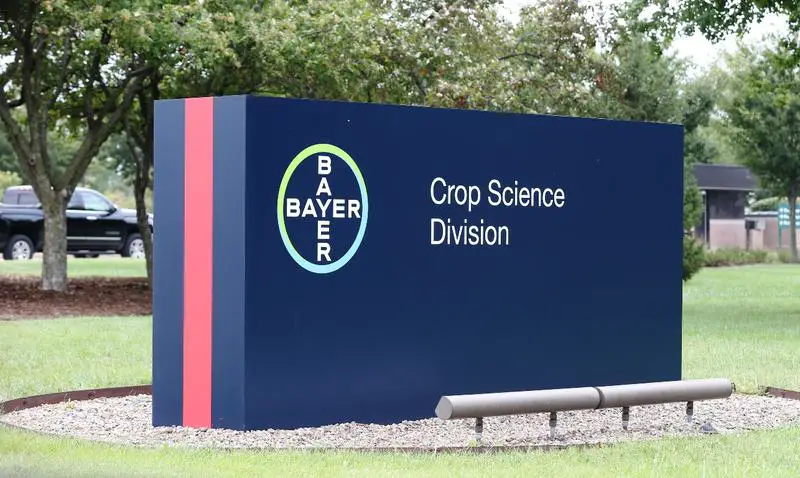
The new Bayer/Monsanto sign. Photo via Bill Greenblatt/UPI
The Bayer-Monsanto merger has been in he final stages for the past for months, with one major hangup: the two companies have not been allowed to share business information as part of the Department of Justice’s pre-merger requirements.
But now, Bayer and Monsanto executives have finally had a chance to get together as “one team,” putting wheels in motion as part of a $66 billion business deal that could change the face of the chemical industry, and farming in general, as we know it.
In Creve Couer, Missouri, the first sign of Bayer’s takeover finally came to the forefront as the Monsanto frontage was replaced by a new ‘Bayer Cropscience Division’ sign, the official moniker for the company’s GMO seeds, pesticides and plant research department.
For anyone expecting Bayer to hold back in this area, you may not want to hold your breath.
According to projected numbers revealed by one top executive within the company’s CropScience division, the GMO experiment could be an even bigger one than at any time in previous memory, and this time around, it will be streamlined to produce the controversial new lab-created crops with unique “traits” faster than ever before.
Nearly $3 Billion Expected to Flow Into Bayer’s GMO Crop Science Division
According to a report from the website AGWeb, Bayer’s GMO division is expecting a potentially record-breaking level of investments for new “crop technologies (read: GMOs and pesticides)” in the coming years.
About 10% of its sales are given to research and development in the Crop Science department each year, the article said, which could lead to a massive infusion of cash for Bayer’s biggest GMO division.
“Proforma [last year] that would be about $2.8 billion for the combined company—far and away the biggest spend in the industry,” said Liam Condon, president of Bayer Crop Science.
“That’s why we’re so confident we can generate innovation faster.”
While Condon didn’t say exactly what he meant by the word innovation, it’s safe to assume that new GMO crops are a part of that strategy, especially considering Monsanto’s recent $125 million deal to flood the market with new “longer-lasting GMOs,” including potential wheat and strawberries.
A source told AgWeb that the new innovation could rush GMOs to market faster than ever before, combining chemical, GMO “trait,” and seed research together under one roof.
And as usual, the new GMO foods will almost certainly not be labeled, except through a complex system of QR codes that require shoppers use their smart phones to scan each individual item before placing them in their shopping cart.
The Bayer-Monsanto Mega Merger is Bad News for Health and the Environment
Combined, the two companies are expected to make up a global pesticide and GMO seeds giant that could make up over 25% of the world market, a development that critics say could cause serious harm to small and family farmers by consolidating power into the hands of one mega-corporation.
Bayer’s new North American headquarters is now expected to be located on the site of Monsanto’s St. Louis-based business campus, and already the new company is ramping up operations in more ways than one, building over $400 million worth of greenhouses in the area while moving new scientists from Research Triangle Park, N.C., the former North American headquarters location of Bayer.
“It’s been a long time coming [the full integration] but one advantage [is] we’re extremely well-prepared,” said Condon according to the AgWeb article. “At the end of the day what we want to do is bring what we think is the most advanced technology platform together.”
But how much “technology” and “innovation” is really needed at a time when interest in organic farming, biodynamic farming and even high-producing private permaculture gardens is soaring, and customers are seeking to avoid buying and eating GMOs more than ever before?
That seems to be the multi-billion dollar question that still hasn’t been answered as of yet.
One thing’s for sure, however: Bayer and the former Monsanto company are going to give it everything they’ve got, and key players like Bill Gates and yes, members of the U.S. government including Donald Trump are more than willing to throw their considerable weight behind them.
Thanks for reading! For more articles like these in your inbox (plus a free eBook), click on this link. You can also learn more about the true, untold history of GMOs by checking out this book.
Thumbnail photo via Emmanuel Dunand/AFP.
Thanks for installing the Bottom of every post plugin by Corey Salzano. Contact me if you need custom WordPress plugins or website design.





